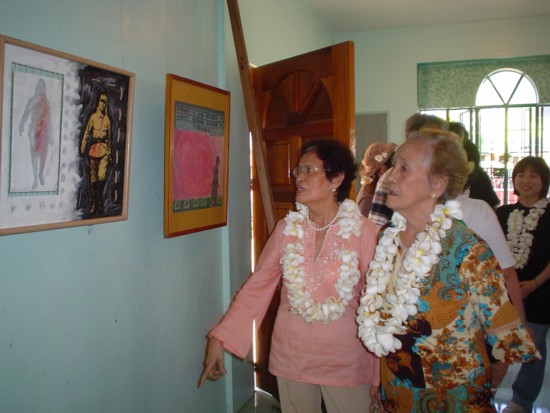
(Item under "Vintage View" column published in the Philippine Daily Inquirer, October 18, 2003.)
THEY had never kissed at all. And "Besame Mucho" (Kiss Me a Lot), a Spanish folk song with a lively melody but strange lyrics, was one song that she could not finish singing without the help of a song sheet.
Yet, this foreign song formed the affectionate bond of friendship that helped two virtual enemies survive a cruel war.
The national enemy was Private Kennosuke Nakajima, a Japanese radio operator assigned with the 10th Company, 9th Infantry Regiment of the Japanese Imperial Army that was stationed at Biliran town on Biliran Island during World War II in 1944.
He was the only Japanese soldier in his company to have survived the Battle of Leyte after the return of the Allied Forces led by Gen. Douglas MacArthur in October 1944.
Nakajima’s virtual local enemy was named "Elsa." Details of his pre-October 1944 friendship with her dot the pages of his two books of memoirs published in the late 1980s.
In the first book titled "Leyte Island: Wandering Between Life and Death," published in 1987, Nakajima described "Elsa" as follows:
"She was 17 years old. She was not as beautiful as the mayor’s daughters, but she was also beautiful. Her house was located at the edge of the town. She was living with her parents.
"Elsa’s father was a farmer. He was almost always out to work on his farm. I usually went to their house on the pretext of learning the Visayan language from their daughter.
"Elsa did the housework together with her mother. Sometimes she would be reading a book by the window ... She liked to sing. She could sing some Spanish songs; her voice was beautiful. I did not know anything about Elsa’s songs. But I really liked to see her singing.
"Elsa’s father was a calm middle-aged farmer. He loved to receive the cigarettes that I gave him when he was home during my visits. When I asked him if he liked the cigarettes, he usually smelled it first and would say, ‘These are nice cigarettes.’ Then he would start smoking.
"Elsa"
It took me at least five years before I learned who "Elsa" was. The final clue came from the translation of the Biliran portion of Nakajima’s second book of memoirs titled "Leyte’s Songs for the Dead," published in 1988.
Nakajima described a meeting with "Elsa" in Biliran in 1976, after he and his team retrieved the remains of a Japanese pilot buried behind the school building in nearby Naval town.
"Elsa" turned out to be Francisca Laurente-Chan. A mother of eighth - six daughters and two sons - she is now a widow in her late 70s. Four of her daughters are based in the United States. A son is in Canada. Two daughters are based in Cebu and the other son is the present vice governor of Biliran.
Back